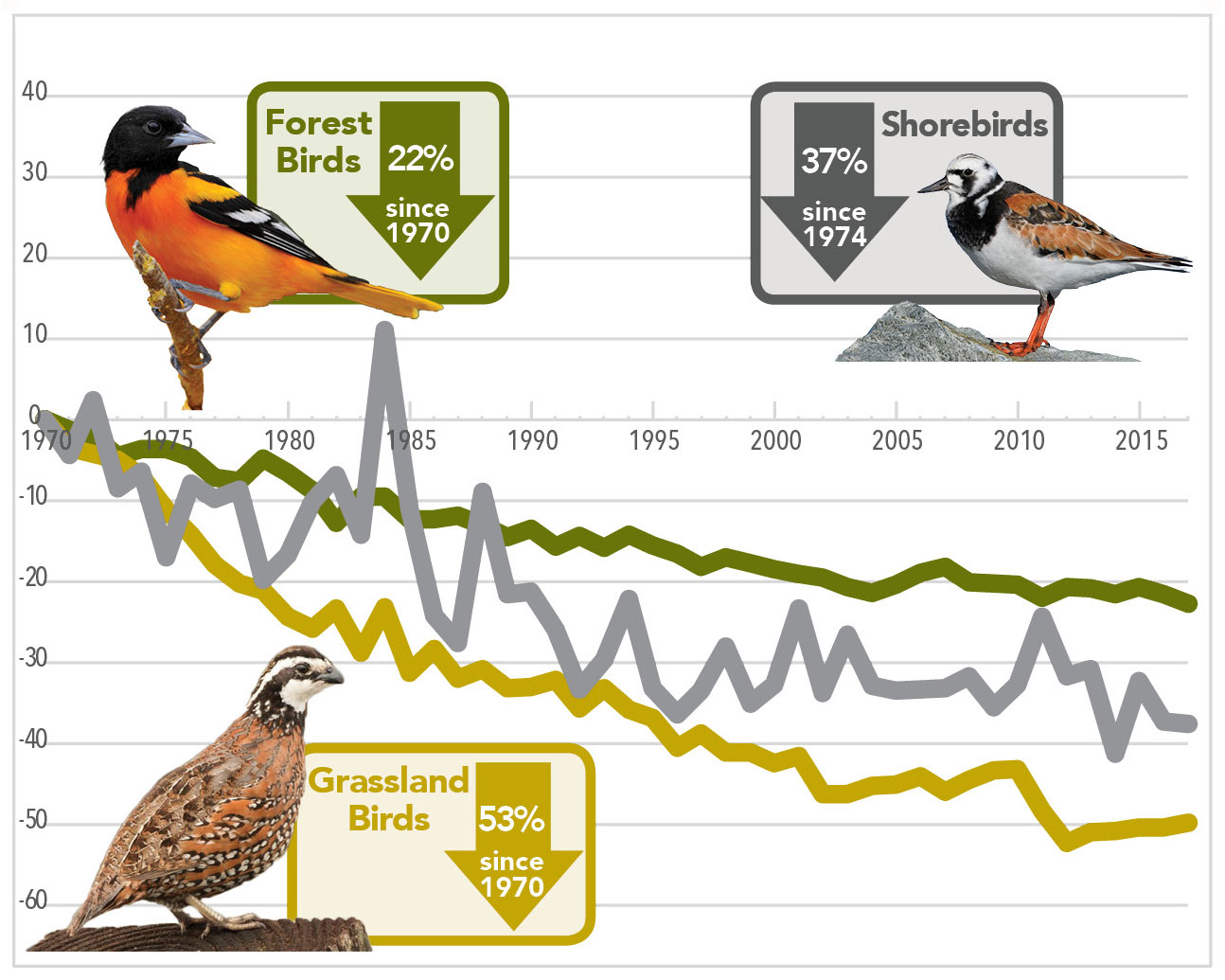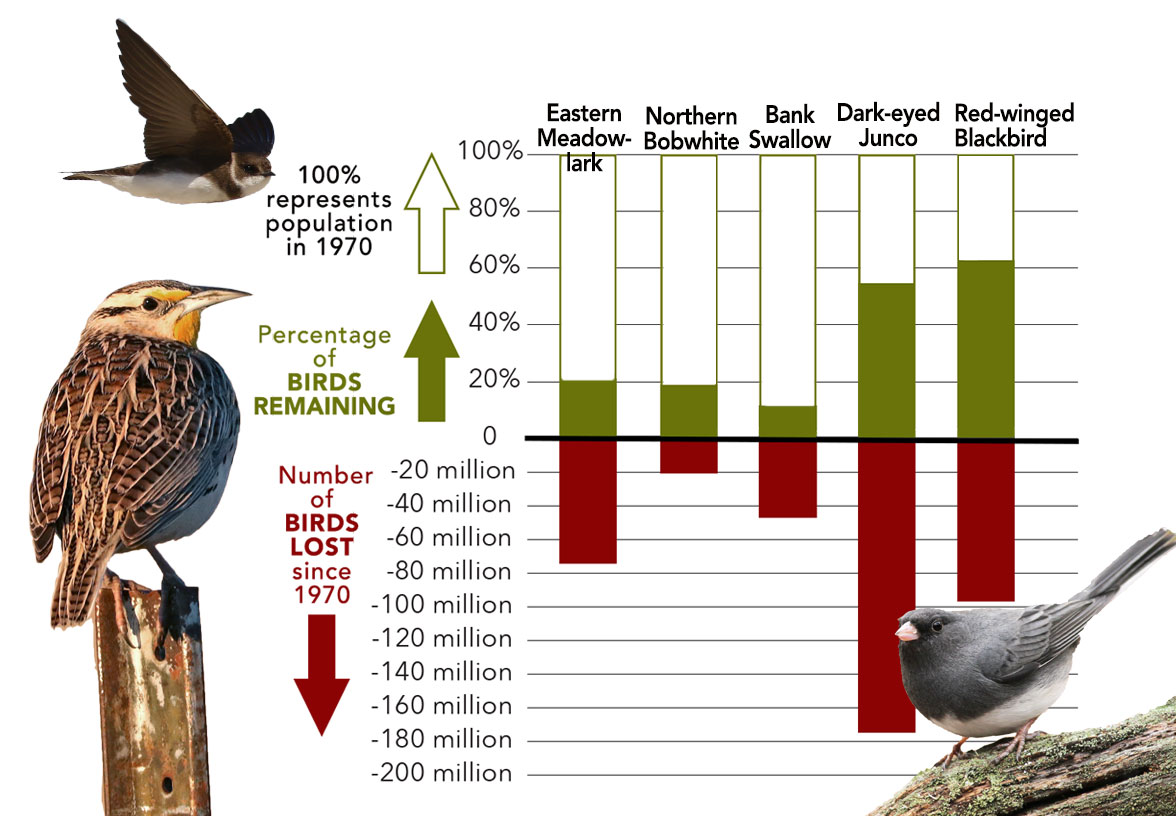Steep Declines
America’s Birds Are in Steep Decline

Forest birds have experienced consistent declines, with big losses among beloved species such as Wood Thrush and Baltimore Oriole. Altogether, forest bird populations have lost 1.2 billion birds since 1970. The Baltimore Oriole has declined by 44% since 1970; it is designated as a species of greatest conservation need in 7 states.
Shorebirds include many migratory species such as Ruddy Turnstone and Semipalmated Sandpiper that are declining fast, with critically low populations that may soon trigger Endangered Species Act listings. Ruddy Turnstone numbers have fallen by 80% since 1974; it is designated as a species of greatest conservation need in 17 states.
Grassland birds have suffered the steepest losses, with a population decline of 700 million birds. The biggest declines are among birds beloved by birdwatchers and hunters alike, such as Northern Bobwhite. Bobwhite populations have declined by 78% since 1970, and the species is designated as a species of greatest conservation need in 26 states.
Big Losses Among Some of Our Most Beloved Birds

The pervasive declines among American birdlife spread well beyond the rare and threatened species; it is a crisis for almost all birds everywhere. Just 15 species of “common birds” (species that were once abundant, such as meadowlarks, juncos, blackbirds, and swallows) account for more than two-thirds of the total loss in native bird populations. Our common birds are now suffering population losses in the tens of millions— similar to the decline of the Passenger Pigeon.
More Details of the Study
The results presented here come from Decline of the North American Avifauna, a paper published in the journal Science in September 2019. Please see that paper for full details of the study, its methods, results, and supporting information. If you do not have access to Science magazine online, you can download a PDF of the paper through the link at the top of this page.
In addition, you can read summaries of the paper’s findings at 3BillionBirds.org and in Living Bird magazine.
